As we look toward 2025, the global eCommerce market is expected to reach an impressive $4.8 trillion—a figure that signals the unstoppable growth of online retail. And this expansion isn’t limited to B2C: by 2026, B2B eCommerce is anticipated to reach a staggering $36 trillion, while B2C eCommerce is projected to hit $5.5 trillion by 2027. With an estimated 23% of all retail sales occurring online by 2027, it’s clear that borderless ecommerce is a booming opportunity for forward-thinking businesses.
But with opportunity comes competition. As the industry scales, customer expectations rise, making it essential for brands to stay ahead of the curve. Embracing the latest trends, implementing a killer ecommerce strategy, and understanding best practices aren’t just smart moves—they’re necessities to foster customer loyalty and drive ecommerce sales in today’s dynamic market.
So, what are the top ecommerce trends shaping 2025? Let’s dive in.
Trend #1: MACH-driven ecommerce
In B2C ecommerce, MACH architecture (Microservices, APIs, Cloud-native, and Headless) is revolutionizing how ecommerce sites are built and managed. This modern approach allows businesses to deliver a personalized, faster, and seamless shopping experience for today’s demanding consumers. As we move into 2025, more brands are transitioning from monolithic systems to MACH stacks, pushing competitors to adapt or risk falling behind.
The main advantage of MACH? It empowers brands to quickly adopt other emerging trends in ecommerce, scale efficiently, and continuously enhance the customer journey.
Here’s how each component of MACH contributes to a better B2C (business to consumer) experience:
Microservices-based platforms
Microservices make it easier for B2C brands to manage complex online shopping needs, especially as they expand. With a microservices-based platform, brands can exercise precise control over every element of their online store, from product recommendations to checkout processes. This approach also allows for rapid updates with minimal downtime, providing a smoother, uninterrupted shopping experience for customers.
API-first approach
APIs (Application Programming Interfaces) are essential for connecting different systems and technologies within a store. For B2C brands, an API-first approach means easier integration with tools like payment gateways, inventory management, and marketing automation, ensuring a streamlined and connected customer experience. In 2025, adopting an API-first approach will allow brands to introduce new features faster, integrate with emerging technology, and offer shoppers a seamless journey from discovery to checkout.
Cloud-native systems
Cloud-native eCommerce platforms allow B2C brands to scale effortlessly, handle traffic spikes, and reduce operational costs, which is crucial for peak shopping periods like holiday sales. By leveraging cloud computing, brands can ensure consistent performance regardless of demand, offering shoppers a reliable experience and preventing slowdowns during high-traffic events.
Headless Commerce
Headless commerce separates the frontend (the customer experience) from the backend (data management). This setup allows brands to deliver a consistent experience across different devices, from smartphones and tablets to voice assistants and wearables. Headless commerce also provides more control over the store’s appearance, empowering B2C brands to quickly update visuals, layout, and features without heavy development work. The result? Faster innovation cycles, improved user experiences, and increased conversions.
The two main benefits of implementing headless are:
Enhanced Control Over Storefront UI: Brands have the freedom to adjust the look and feel of the store, optimizing conversion rates on the frontend without backend constraints.
Composable Commerce: With a composable approach, ecommerce stores can be broken down into components that can be easily added, removed, or modified. This flexibility lets brands respond swiftly to evolving industry trends, customer preferences, and market shifts, ensuring they remain competitive.
With 74% of businesses admitting they fail to adapt to emerging ecommerce solutions, headless commerce is a major problem-solver for online retail. So much so that, in 2022, 80% of businesses planned to implement headless architecture over the following two years.
Trend #2: Easier payment methods with digital wallets & BNPL

In 2025, digital wallets and buy now, pay later (BNPL) options are set to become even more integral to the online shopping experience. With digital wallets like Google Pay, Apple Wallet, and PayPal, consumers can enjoy faster, more secure checkouts. Apple Wallet, for instance, includes features like ID verification, digital key sharing, loyalty card storage, and more—creating a hub for streamlined payments and added convenience.
By 2025, payments with digital wallets are projected to reach an impressive $9.4 billion, with significant adoption in China, Eastern regions, and a steady rise in the United States. This growth highlights that digital wallets are no longer just an emerging trend—they are a core component of the ecommerce experience. With API-driven ecommerce solutions, integrating digital wallets is simpler than ever, allowing online retailers to enhance checkout options with minimal effort.
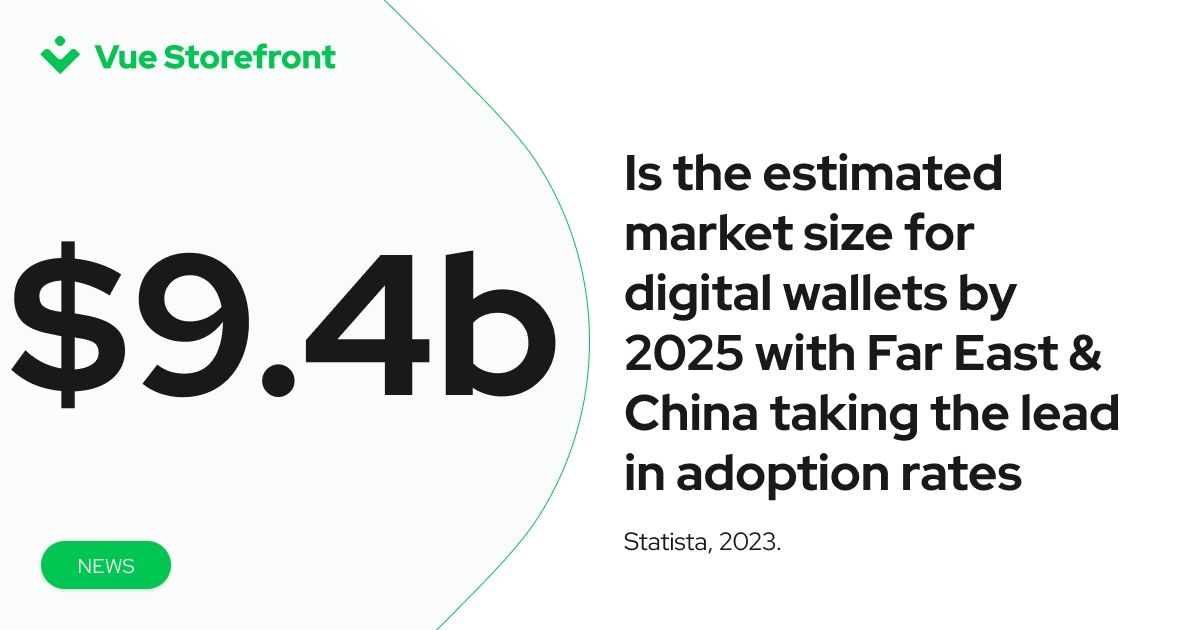
The Rise of BNPL
The BNPL trend is also accelerating, especially given the uncertain economic landscape. BNPL already accounted for 5% of global eCommerce transaction volume in 2023 and is expected to grow at a CAGR of 16% through 2026. With BNPL options like Klarna and Sezzle, customers can make purchases without immediate payment, offering flexibility and often no interest—making it a more appealing alternative to traditional credit.
For many, BNPL has become essential: it offers a flexible way to manage budgets, avoids high-interest rates, and provides a safety net in an unpredictable economy. With composable commerce technology, integrating BNPL solutions across an entire website is quick and easy, allowing retailers to cater to evolving consumer preferences without extensive development work.
Whether it’s digital wallets or BNPL, offering these payment methods in 2025 isn’t just convenient; it’s essential for meeting customer expectations and maximizing conversions.
Using Adyen? See how to configure simple Klarna integration via Alokai!
Trend #3: Sustainable commerce
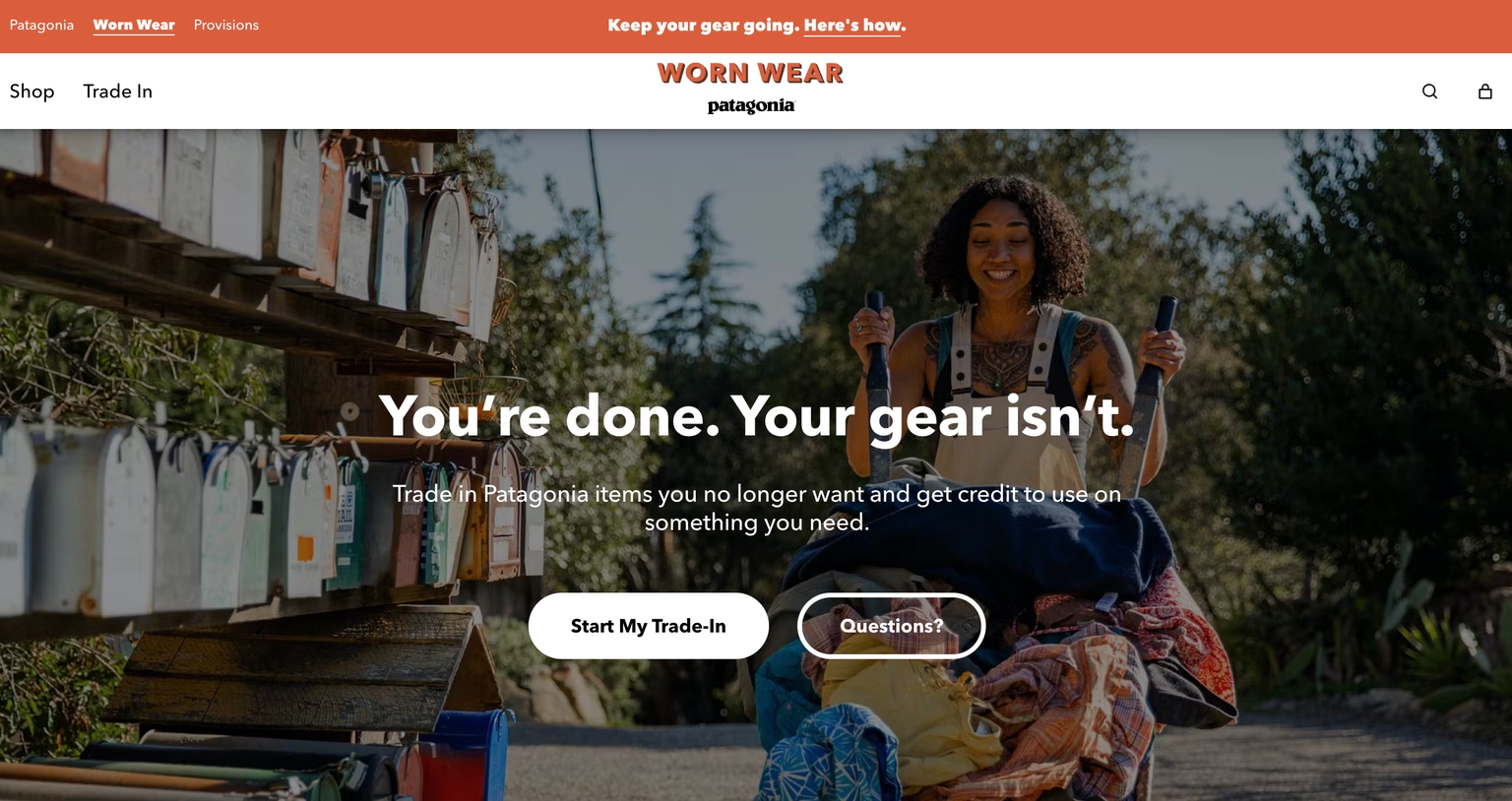
Among the most cruical trends in ecommerce, sustainable commerce holds a dual importance—for both the success of your business and the health of the planet. In 2025, CO2 emissions from the ecommerce logistics sector remain a significant challenge, making it essential for brands to step up and take responsibility.
Consumers are aligned with this shift. A recent NIQ study shows that 70% of shoppers feel it’s more critical than ever to address climate change, and they’re increasingly conscious of the environmental impact of their purchases. In fact, since 2021, consumer awareness has surged, with 85% of shoppers actively seeking more eco-friendly options, from sustainable packaging and reduced fast fashion consumption to ethically sourced materials and hyperlocal commerce.

For eCommerce businesses, adapting to these preferences is no longer just a competitive advantage—it’s a responsibility. Making meaningful changes toward sustainability can help build loyalty with conscientious customers who are looking for brands committed to a greener future.
Here are actionable steps to support sustainable commerce in 2025:
- Ethically Sourced Materials
- Recycled and Eco-Friendly Packaging
- Eco-Friendly Delivery Options
- Partnering with Sustainable Suppliers
- Encouraging Recycling and Upcycling
- Reducing Returns through Personalization
These actions aren’t just ideal for 2025—they’re essential. As consumer demand for responsible practices grows, embracing sustainable commerce is a critical step for any brand looking to thrive while contributing positively to our planet’s future.
Trend #4: Same-day delivery
Same-day delivery is becoming a standard expectation among online shoppers, driven largely by Amazon Prime and other major players. In 2025, consumers increasingly seek instant gratification from their purchases, putting pressure on eCommerce brands to offer faster delivery options to remain competitive.
However, same-day delivery is a double-edged sword, especially regarding sustainability. While it can boost customer loyalty and satisfaction, it also comes with a significant environmental cost. Approximately 17% of global CO2 emissions are tied to transportation, and the rush for same-day delivery can exacerbate this impact. With shorter fulfillment windows, companies often ship partially loaded trucks and face higher risks of human error, increased returns, and added noise pollution.
To meet customer expectations without compromising sustainability, ecommerce brands should consider these strategies:
- Offer Next-Day Delivery as a Greener Alternative
- Eco-Friendly Delivery Options
- Incentivize Sustainable Choices
- Transparent Communication on Environmental Impact
Same-day delivery is poised to become a staple of eCommerce, but balancing speed with sustainability is essential. By exploring and promoting eco-conscious delivery options, businesses can meet consumer demands while reducing their environmental impact in 2025 and beyond.
Trend #5: AI & multi-channel customer support
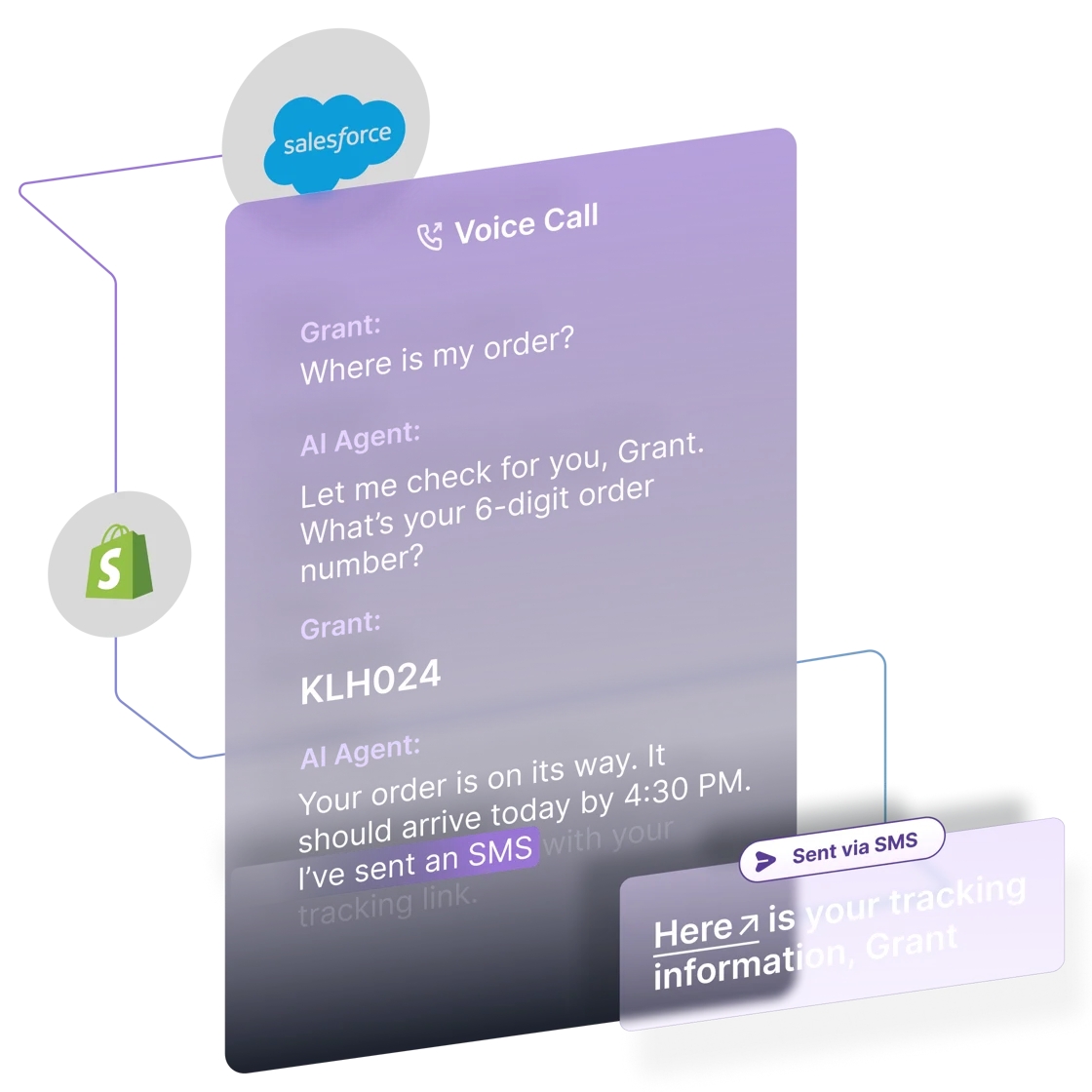
In 2025, AI-driven customer support and multi-channel engagement are setting new standards in eCommerce. With advancements in AI from companies like OpenAI, AI-powered chatbots have evolved to deliver faster, more accurate responses, enhancing the customer experience and meeting the demand for instant support.
Customers today expect flexibility in how they reach support. Whether it’s through chatbots, WhatsApp, Facebook Messenger, voice calls, or email, offering multiple support channels is essential to cater to individual preferences and provide a seamless support experience. Solutions like Ada, an AI chatbot capable of handling both voice and text, are empowering brands to offer more dynamic, 24/7 assistance.
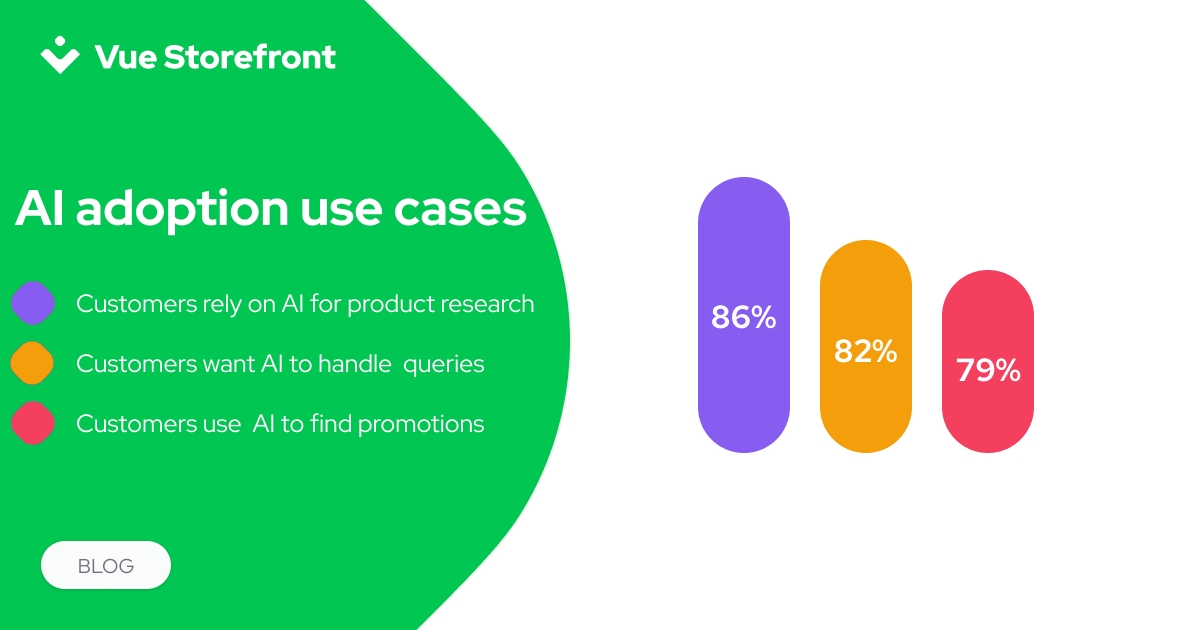
A recent eMarketer survey shows that shoppers are eager for AI’s assistance, with 86% interested in AI help for product research, 82% seeking AI-driven customer service support, and 79% wanting AI to help locate promotions. This shows a clear shift toward AI-enabled interactions across the journey, from discovery to post-purchase support.
With AI and multi-channel support, brands can make it easier than ever for customers to get the help they need, no matter when or where they need it. Embracing these technologies will be key to meeting the high standards for service that customers expect in 2025 and beyond.
Trend #6 Localization
In 2025, localization is essential for eCommerce brands reaching a global audience. Although over 50% of online content is in English, only a quarter of internet users are native English speakers. To overcome this barrier, 91% of global companies now use translation and localization services. Check out this guide about localization if you want to learn more.
Effective localization isn’t just about language—it involves adapting content, imagery, and payment options to fit local cultures. By investing in a tailored, localized experience, brands can boost customer trust, increase conversions, and build loyalty in diverse markets.
Trend 7: VR and AR
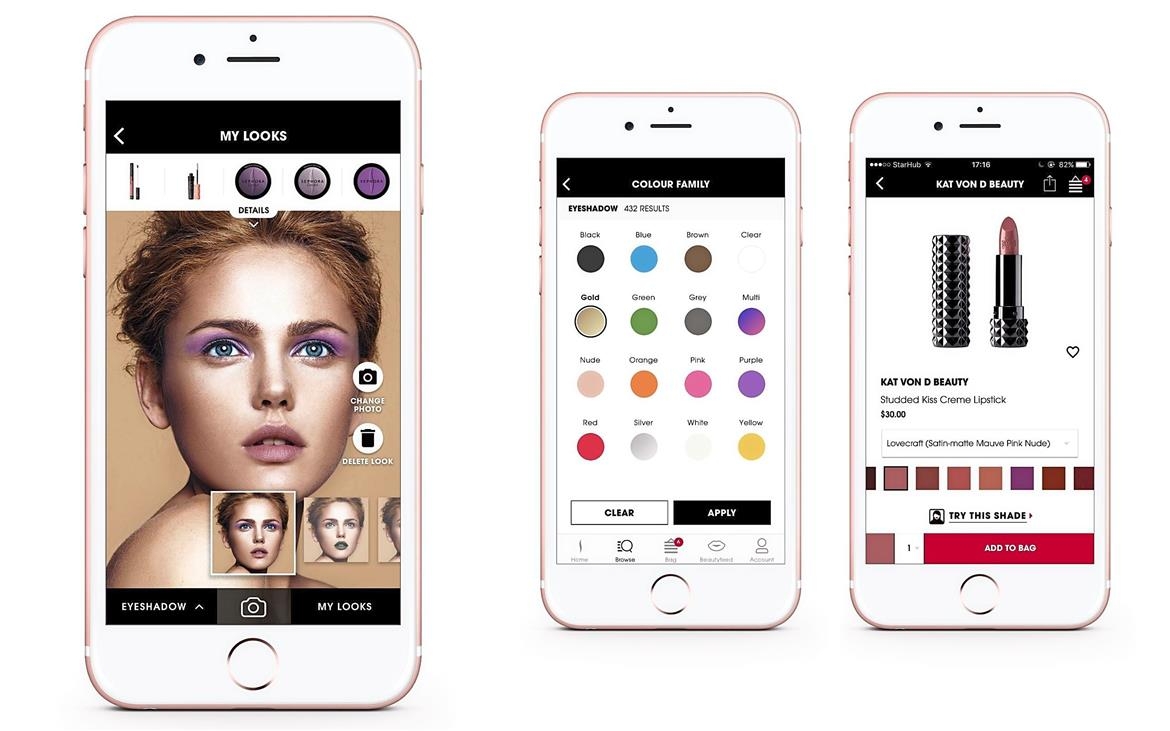
Sephora's AR campaign from 2020 (Source: Braze)
Virtual and augmented reality technologies are transforming the eCommerce experience. Brands like Sephora and L’Oreal have pioneered these features, with Sephora seeing a 28% increase in AR adoption during 2020. By 2025, VR and AR are becoming mainstream for eCommerce, not just for major brands but also for smaller retailers.
These tools offer a game-changing experience across various niches. Shoppers can see how furniture fits in their space or virtually try on clothing before purchasing, creating a more immersive and confident buying experience. As VR and AR technology becomes more accessible, expect to see it widely adopted, enhancing customer engagement and satisfaction in online shopping.
Trend #8: Live streaming and social commerce
Live streaming is reshaping eCommerce as platforms like TikTok and Twitch make real-time engagement a major driver of online sales. Social commerce is on the rise, with SMBs even running entirely on platforms like Instagram, and consumers increasingly embracing in-app purchases on Instagram, TikTok, and more.
In 2023, live-stream shopping generated $17 billion in ecommerce sales, a figure projected to surpass $55 billion by 2026. Live streaming’s appeal lies in its authenticity—it feels real, unscripted, and fosters trust, making it a powerful tool in digital commerce.

To leverage this trend, consider hosting live shopping events or partnering with influencers to showcase your products. Focus on mid-level influencers who connect more personally with followers and are often more trusted than mega-influencers. Popular platforms and tools for live streaming include Facebook, Instagram, TikTok, Vimeo, Be.Live, and Dacast.
As live streaming becomes more integrated into eCommerce, it offers brands a direct, impactful way to boost engagement and conversions in 2025.
Trend #9: First-party data collection
With Google phasing out third-party cookies in 2024, eCommerce businesses must now focus on collecting first-party data directly from their websites and apps to continue delivering personalized ads and offers. While this shift may feel challenging for brands that relied on third-party data, it’s also an opportunity to build more authentic customer relationships and offer tailored experiences through first-party insights.
First-party data isn’t just more ethical—it’s also more reliable, empowering brands to engage customers in ways that respect privacy and foster trust.
Some effective methods for collecting first-party customer data include:
- Surveys
- Website Analytics
- Email Engagement
- Social Listening
- App Usage Data
- Customer Service Feedback
In 2025, first-party data will be essential for personalizing interactions while maintaining customer trust, helping brands to adapt effectively in a privacy-first era.
Final thoughts
Not every trend will be the right fit for your b2c ecommerce business, and timing is just as important as relevance. The true art of leveraging ecommerce future trends lies in choosing those that align with your brand’s vision and resonate with your audience.
Stay curious and open to experimenting, continuously adapting to the evolving ecommerce landscape. Embrace the changes that allow you to create a richer, more seamless and personalized shopping experience—one that makes customers feel confident buying from you even without a physical touchpoint.
In the end, success in b2c ecommerce isn’t about following every trend; it’s about building trust. When customers trust your brand, they’re more likely to return, recommend, and grow alongside you.

















